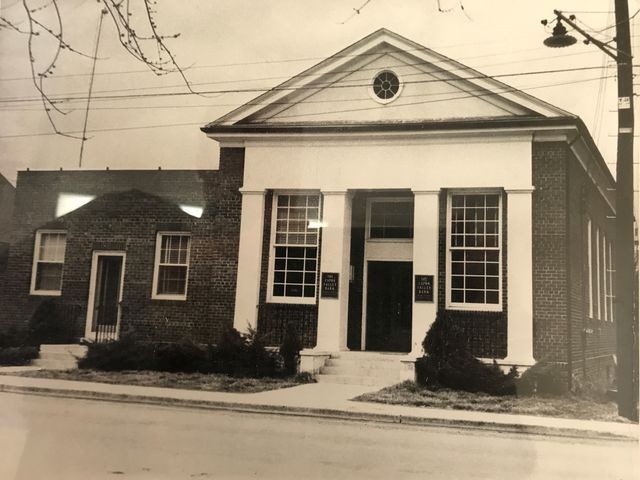Our History
 The Beginnings: 1918
The Beginnings: 1918
Born from an economic boom in the timber industry surrounding Wardensville, W.Va., Capon Valley Bank, also known as Your Good Neighbor Bank, has demonstrated resilience in both prosperous and challenging times. In July of 2018, the bank proudly celebrated its 100th anniversary.
Michael McDonald, President & CEO, said, “Reaching a century of service is a testament to our commitment to the communities we serve and the trust they place in us. As we honor our past, we remain focused on building a strong future for our customers, employees, and the region.”
A Humble Start: The Early Years
Today, Capon Valley Bank holds approximately $150 million in assets, operates five offices (three in West Virginia and two in Virginia), and employs more than 60 people. However, its beginnings were humble. In 1918, newspaper articles noted a “healthy boom at Wardensville” fueled by timber deals, which spurred the development of a branch railroad line and a lumber mill. This economic growth created the need for a local financial institution, and in 1918, a group of investors—including representatives from the timber and railroad industries—organized Capon Valley Bank with $30,000 in capital. William Barney was elected president, and B.F. Sine was named secretary and cashier.
On the bank’s first day of operation, July 30, 1918, there were 26 deposits totaling $4,958.96, and one loan for $850. The bank’s first office was a rented room on Wardensville’s Main Street, which served as the bank’s headquarters for the next 30 years.
Challenges and Perseverance: The Early Struggles
Capon Valley Bank faced early challenges, including the untimely death of its president, William Barney, in January 1919. Despite these setbacks, the bank celebrated its first anniversary with $85,000 in assets and $54,000 in deposits. J.V. Warden, a scion of the town’s namesake family, became president and provided steady leadership for the next 36 years. Under his guidance, the bank survived the Great Depression, the closure of local timber mills and railroads, and the turmoil of World War II.
In 1933, Capon Valley Bank applied for membership with the Federal Reserve Bank of Richmond and the Federal Deposit Insurance Corporation (FDIC). The post-war period brought hope, and in 1946, the bank announced plans to build a new office at 2 W. Main St. in Wardensville. The new office, featuring a massive vault door purchased for $5,971, opened on February 25, 1949. This building and vault remain at the core of the bank’s operations today, though it has undergone several renovations and expansions in 1974, 1984, and 2001.
Growth and Expansion: 1980s and Beyond
As Capon Valley Bank moved into the 1980s, it sought to expand its services to neighboring communities. In May 1986, the bank opened its first branch in Moorefield, W.Va., just months after the area was devastated by the November 1985 flood. This gesture demonstrated the bank’s commitment to supporting the community’s recovery.
In 1986, Capon Valley Bank also merged with Highlands Bankshares Inc., which was affiliated with Grant County Bank. This merger allowed Capon Valley Bank to continue operating independently with its own local board—a structure that remains in place today.
Expanding Horizons: The New Millennium
The bank expanded further with the opening of a branch in Baker, W.Va., in 1997 and its first out-of-state branch in Gore, Va., in 2001. By 2010, Capon Valley Bank opened its Stephens City, Va., branch despite the challenges posed by the ongoing national economic crisis. The bank’s resilience ensured its success in the Frederick County, Va. market.
Looking to the Future: Expansion into Winchester, Va.
Capon Valley Bank is thrilled to announce the opening of our new branch, Winchester North, scheduled for Fall 2025. This expansion is a testament to our continued commitment to providing convenient, community-centered banking services to our growing customer base in Virginia.
Commitment to Community: The Good Neighbor Bank
As Your Good Neighbor Bank, Capon Valley Bank remains dedicated to fostering lasting relationships and supporting the communities it serves across both West Virginia and Virginia. We are the “Local People. Local Banking. Local Choice.” bank.


